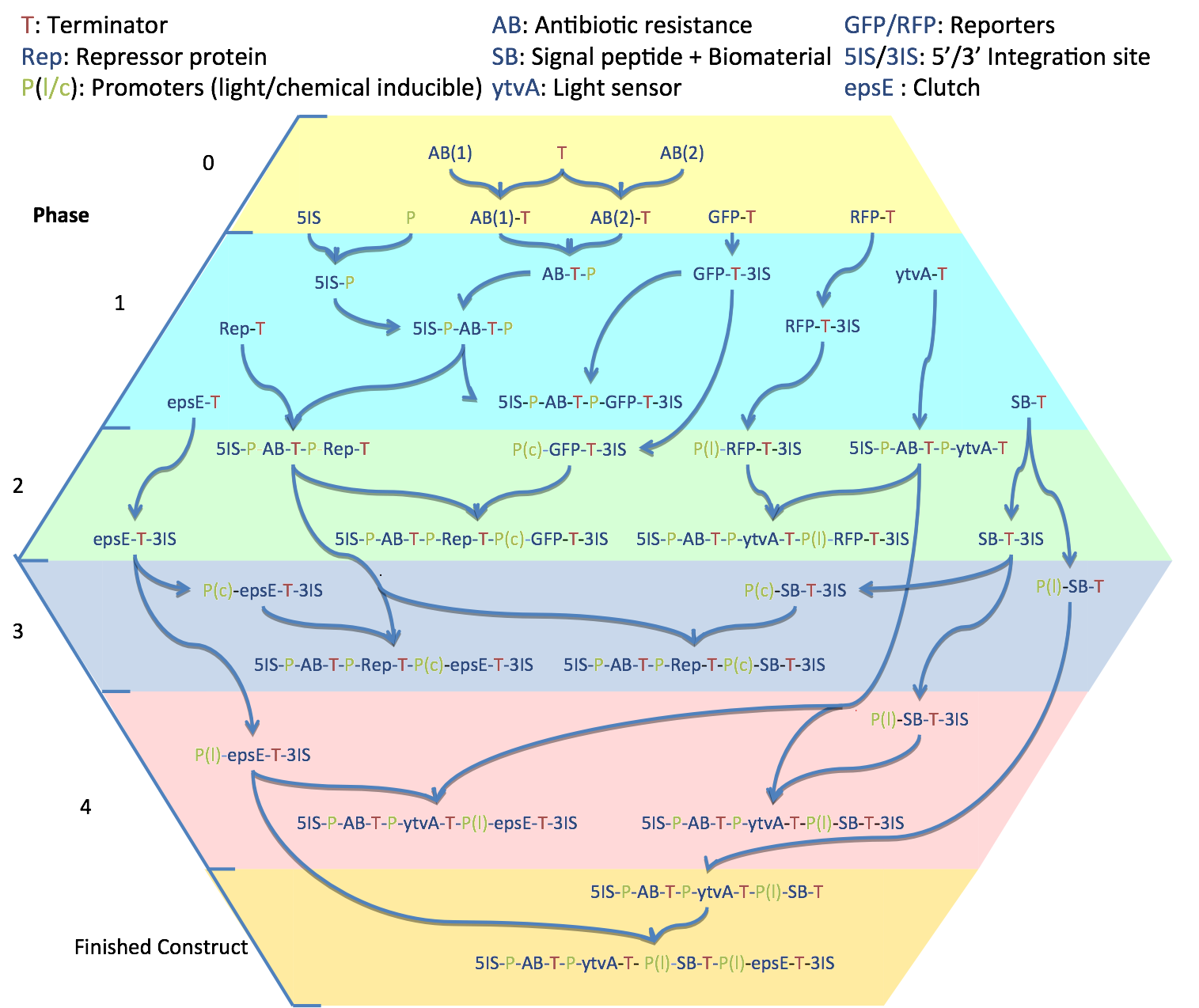Team:Imperial College/Cloning Strategy
From 2008.igem.org
m |
|||
| (3 intermediate revisions not shown) | |||
| Line 1: | Line 1: | ||
{{Imperial/StartPage2}} | {{Imperial/StartPage2}} | ||
| + | |||
=== Cloning Strategy === | === Cloning Strategy === | ||
{{Imperial/Box2|| | {{Imperial/Box2|| | ||
| Line 38: | Line 39: | ||
====== Final Construct: System Characterisation ====== | ====== Final Construct: System Characterisation ====== | ||
Combination of light sensing and light-induced expression of epsE and biomaterial. Each gene has its own promoter/RBS pair because in ''B. subtilis'', it has been shown that levels of expression decrease as one moves along an operon. | Combination of light sensing and light-induced expression of epsE and biomaterial. Each gene has its own promoter/RBS pair because in ''B. subtilis'', it has been shown that levels of expression decrease as one moves along an operon. | ||
| - | <p><html><center><img width="750px" src="http://i59.photobucket.com/albums/g305/Timpski/S1L.png"></ | + | <p><html><center><img width="750px" src="http://i59.photobucket.com/albums/g305/Timpski/S1L.png"></center></html></p> |
}} | }} | ||
{{Imperial/EndPage|Wet_Lab|Protocols}} | {{Imperial/EndPage|Wet_Lab|Protocols}} | ||
Latest revision as of 11:11, 22 April 2009
Cloning Strategy
|
|||||||||||||||
 "
"









